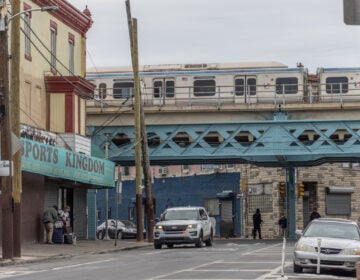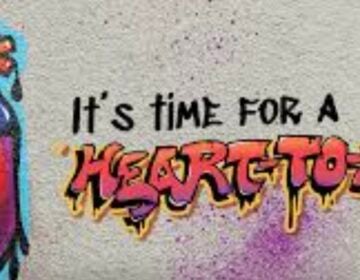‘It will kill you’: Philly outreach workers keep making rounds as bitter cold snap continues
Even in bitterly cold weather, homeless people with addictions are often hesitant to take shelter if it means going to another part of the city and going through withdrawal.
Listen 2:53-
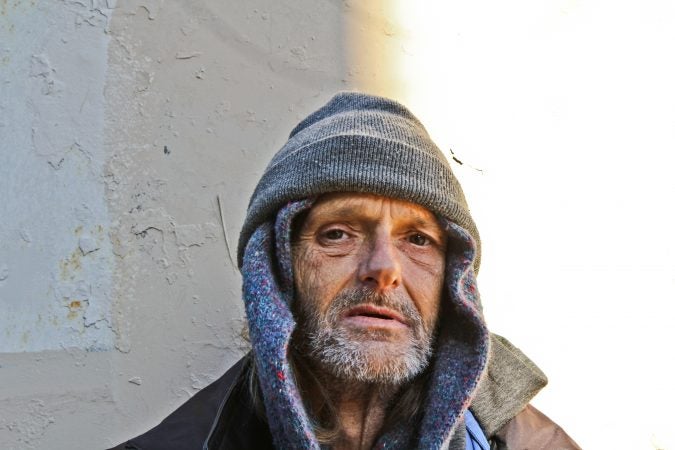
Robert Fifer, 62, has been addicted to heroin since he was 10. He said he's getting too old to sleep outside in the winter. (Kimberly Paynter/WHYY)
-
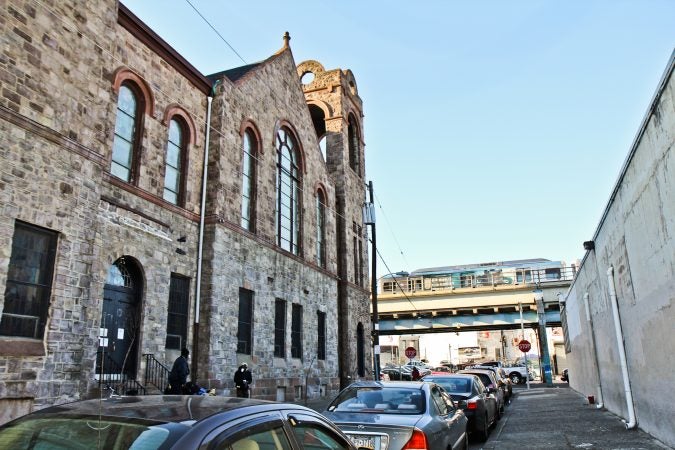
File photo: Prevention Point at the intersection of Kensington Avenue and Monmouth Street. (Kimberly Paynter/WHYY)
-
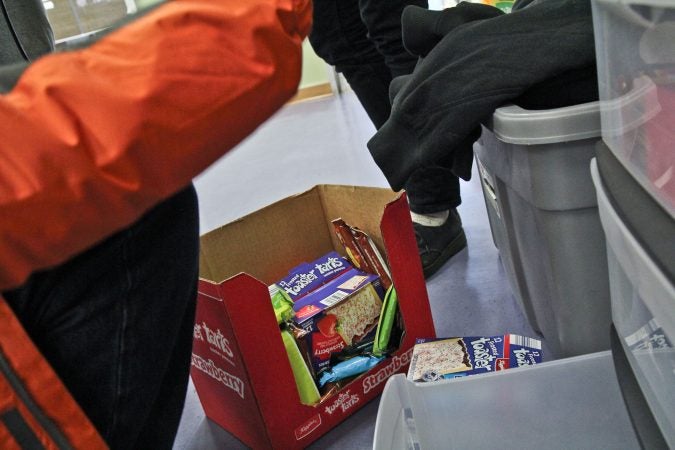
Nick Hale and Luke Dunn with Homeless Outreach always approach people and first offer them a snack. (Kimberly Paynter/WHYY)
-
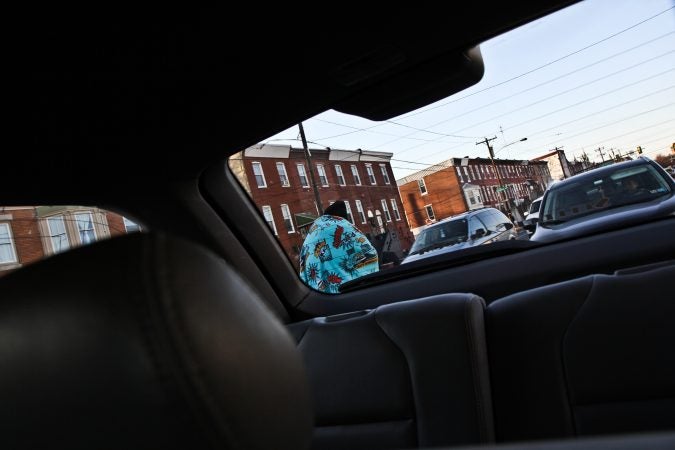
Homeless Outreach workers tell a panhandler on Lehigh Avenue that they will be back with a coat for him. (Kimberly Paynter/WHYY)
-
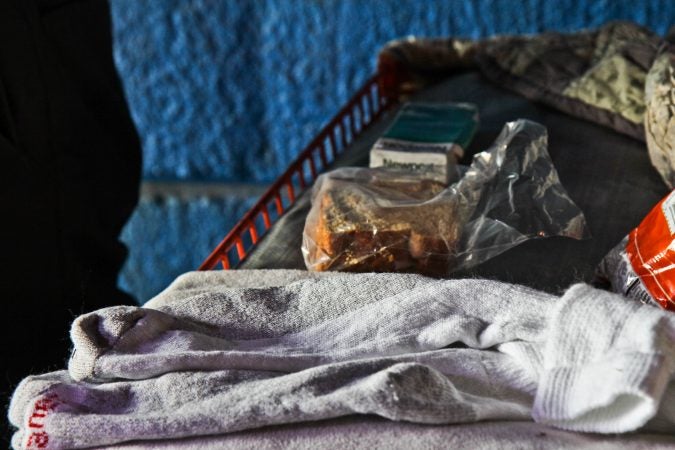
Supplies at a camp under the Frankford bridge in Kensington. (Kimberly Paynter/WHYY)
-
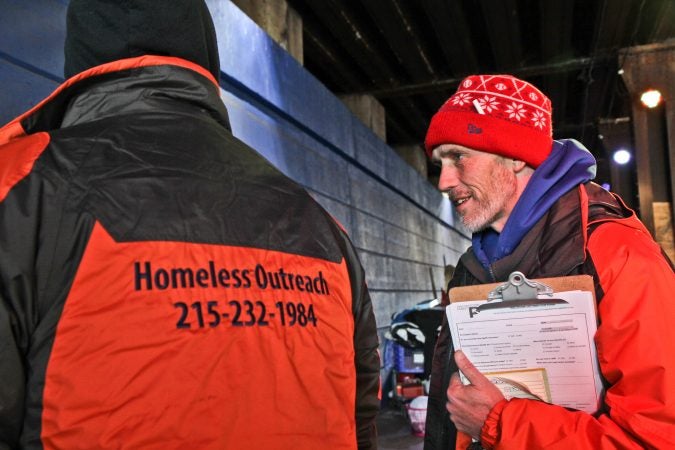
Philadelphia outreach worker Luke Dunn talks to a homeless man. (Kimberly Paynter/WHYY)
-

Luke Dunn and Nick Hale spend their winter days driving around Kensington trying to get homeless people into shelter. (Kimberly Paynter/WHYY)
-
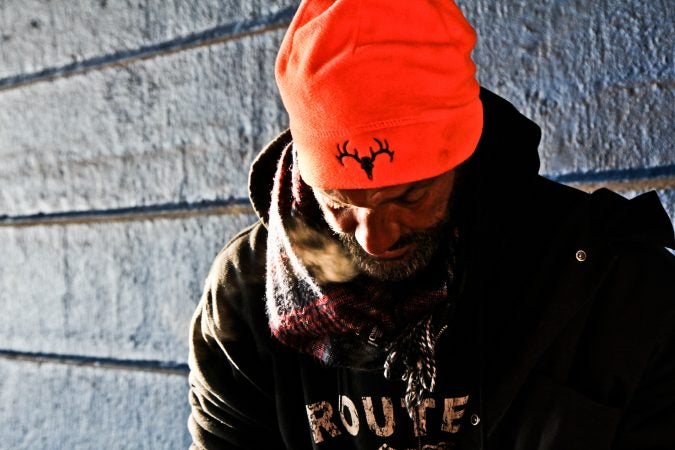
Paul is currently living under the Frankford bridge in Kensington. (Kimberly Paynter/WHYY)
A couple days before New Year’s Eve, Robert Fifer leans his thin frame against the wall of the homeless shelter in Philadelphia he’s been staying at since last week.
The city has been under a Code Blue alert since Christmas Day, and it’s bitterly cold again. Temperatures won’t crack freezing.
Fifer, 62, is grateful he has a place to keep warm at night.
“You don’t fall asleep in weather like this,” says Fifer from a narrow street in the city’s Kensington neighborhood. “It will kill you.”
Fifer has been addicted to heroin for 52 years. For the last three, he’s been living in the streets.
The frigid forecast motivated him to come inside. But he says a pair of homeless outreach workers also caught him at a good moment.
“If I’m doing a little [heroin], I’m more susceptible to help. If I’m doing a lot, you don’t hear nobody,” says Fifer.
Outreach worker Nick Hale, who helped Fifer, said that’s common in Kensington, the epicenter of the city’s opioid crisis. Even during a Code Blue alert — when hundreds more emergency shelter beds are added to the city’s existing stock and outreach workers like Hale hit the streets looking for people like Fifer — many refuse help.
Even when homeless people with drug addictions are lucid, they’re often hesitant to head to a shelter if it means going to another part of the city and possibly going through withdrawal before they can buy more drugs.
“They not be so keen to go because they’ll wake up sick in the morning and where are they gonna go in West Philly if they don’t have a token or a way to get back [to Kensington]?” said Hale, 26, one of the city’s newest outreach workers.
Hale knows he’s playing the long game, though. A large part of his job is about making contact with the same people over and over again so they know help is out there when they’re ready to go to a shelter and take steps to get back on their feet.
That means returning to the same spots, including a series of bridges on the north side of Lehigh Avenue that are home to mini-encampments of people struggling with drug addictions. It also means being open to meeting people wherever they are.
On a recent drive around the neighborhood, Luke Dunn, Hale’s teammate, chatted up a familiar face while they were stopped at a red light. The man was panhandling in the street with not much more than a thin blanket draped over his head and shoulders for warmth.
“You know, dude, whenever you’re ready, let me know man, all right? Even today,” said Dunn, 48, before circling back to a shelter to grab the man an extra winter jacket.
Under a bridge on Frankford Avenue, Dunn chatted up another man he’d never met, who said he had been homeless for nearly a year.
He wanted to stay put, but Dunn convinced the man to give up some personal information – his name, birth date, and the last four digits of his Social Security number – so it could be entered into a city database that keeps tabs on the homeless people outreach workers come in contact with.
Certain treatment centers and housing programs need to know exactly how long someone has been living on the streets before accepting them. They rely on the database for documentation.
Dunn and Hale say helping people get out of the cold feels good, but helping them move towards a better life, hopefully and addiction-free life, keeps them going.
“It feels empowering,” said Hale.
—
If you see someone out in the cold, call the Philadelphia Homeless Outreach Hotline at 215-232-1984. You can also tweet @phlcityhomeless.
WHYY is your source for fact-based, in-depth journalism and information. As a nonprofit organization, we rely on financial support from readers like you. Please give today.



